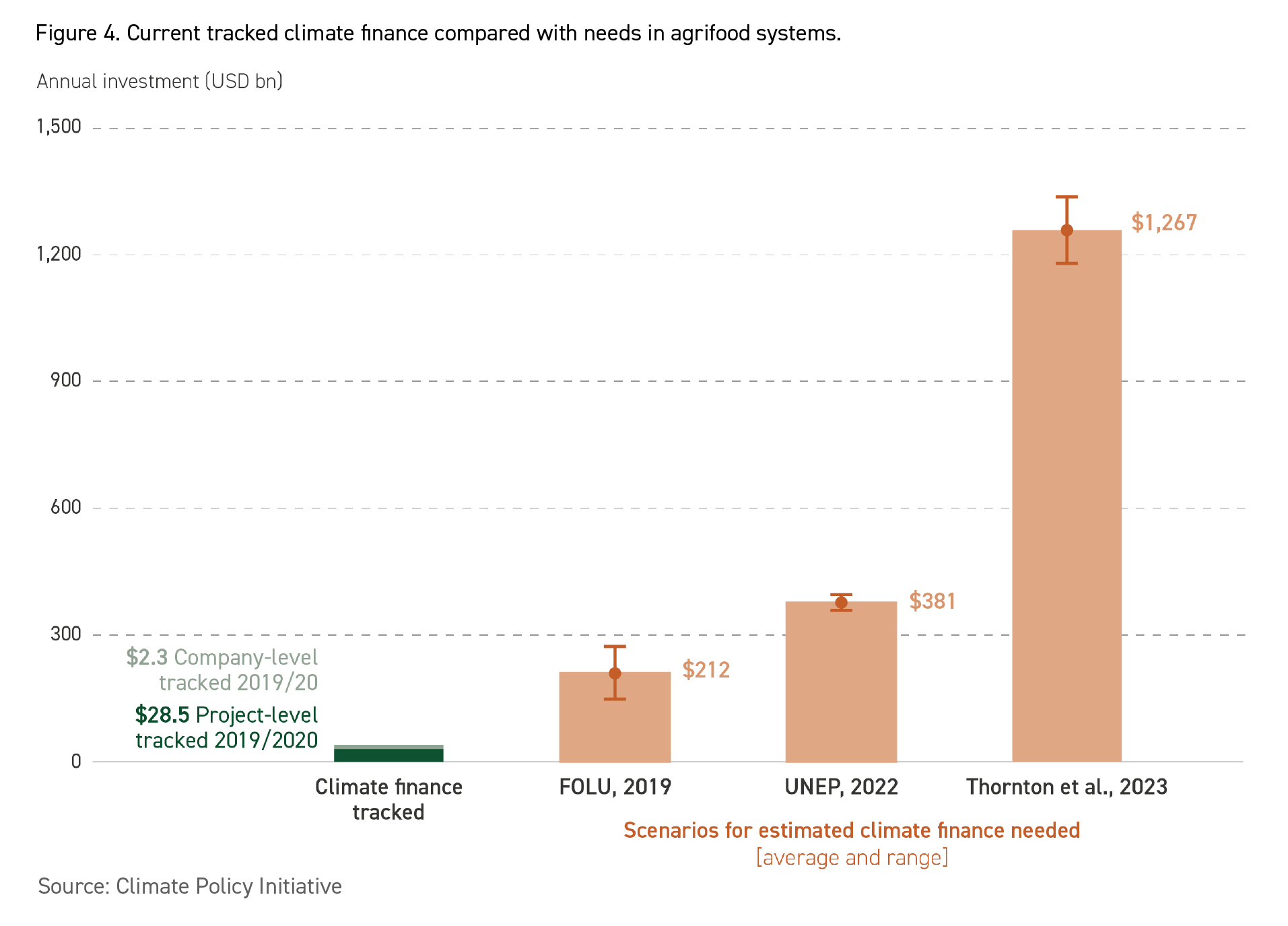Low-carbon and resilient agrifood systems are vital to ensure the food security of a growing human population and global economic development.
These systems are the processes and actors that convert natural resources and the environment into benefits and costs for humans through agricultural production and agro-industries (Campanhola and Pandey, 2019).
The report by CLIC, UK AID and the Climate Policy Initiative, presents the first comprehensive analysis of climate finance flowing to these systems globally, with the aim of better informing decision-makers in this space. Establishing this baseline for financial flows can help to track action against the efforts required to mitigate and adapt to climate change.

Source: Campanhola and Pandey, 2019, adapted
Agrifood systems include high-emitting and climate-vulnerable sectors, yet climate finance flowing to them is strikingly low
KEY FINDINGS
- In 2019/20, agrifood systems received a tiny fraction (4.3%) of total global climate finance tracked at the project level, with an annual average of USD 28.5 billion.
- For the same period, only one in ten dollars of total venture capital (VC) investments in agrifood tech went to companies focused on climate change solutions. This represents an annual average of USD 2.3 billion in VC investments.
- Climate finance for agrifood systems must increase at least sevenfold from current levels to reach the most conservative estimated needs for the climate transition, which is in the order of hundreds of billions of dollars annually (FOLU, 2019).

- General finance channelled to agrifood-related sectors suggests that enough liquidity exists globally to finance this transition. Global public subsidies for agriculture and fisheries are estimated at around USD 670 billion per year, with most of this supporting harmful practices (World Bank, 2023b). In addition, an estimated USD 630 billion of private capital per year is available for investment in food systems (Elwin et al, 2023). Partly repurposing these flows to support climate interventions could provide a major boost in moving towards the levels of climate finance needed.
Click here to access the full report by Daniela Chiriac, Harsha Vishnumolakala and Paul Rosane.






